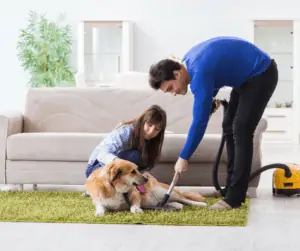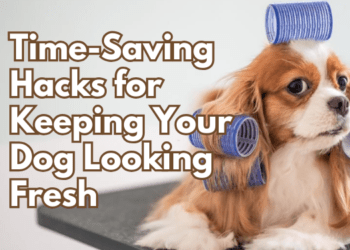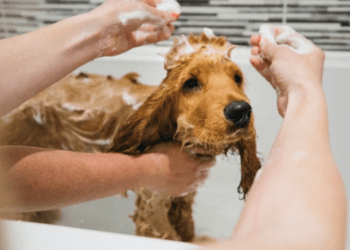Fleas are parasites, that is, they require a host animal to survive. That host can be most any mammal, including humans. Before we jump onto how to get rid of fleas, let’s get some basics clear.
Table of Contents
Fleas- More Than One Species
The most common flea, the cat flea preys primarily on cats, dogs and their humans. Dogs and humans have their own flea species as well, but these are less common.
They thrive in moist, warm environments and the adults live on the blood of the hosts.
Life Stages of the Flea
Female fleas can lay up to 600 eggs in their lifetime. The eggs fall off the hosts and hatch in days to weeks.
Fleas go through a complete metamorphosis. That means they go through 4 stages. When the eggs hatch they are known as larvae. In this stage they actively move, surviving on organic debris. In your home they are living on dust and other organic matter found in the carpet, furniture, animal bedding, etc. (Closeup of a flea)
The larval stage lasts from 5 to 15 days, and then they spin a cocoon (which looks like a bit of lint or fiber on your floors or furniture) and emerge as a pupa. The pupa can stay in the cocoon for upwards of two years if no host is present. Vibrations from footsteps, warmth of mammalian presence, and even vacuuming can initiate hatching.
The adult flea can jump up to 13 inches looking for a meal. Their saliva contains an irritant and it is this substance that causes allergic reactions and the itching associated with fleabites.The adult flea has a very hard body and is difficult to kill by crushing.
Adult Fleas Least of the Problem
Usually all four life stages are present in the home at once, which is why it is essential to treat the environment as well as the animal when trying to eradicate them.
Most of the fleas present at any one time will be in the egg stage. The adult, the most visible stage and the ones that are the most bothersome, actually make up the minority of the total flea population in your home environment.
Many Steps to Eradication
Frequent vacuuming is very important in ridding the house of fleas. The vacuum bag must be sealed inside a plastic bag, as the flea larvae will survive inside the bag. Be sure to get in all the corners and edges of the rooms and furniture, as these are the preferred hiding places.
Diatomaceous earth or boric acid powder can be used to kill the larvae and eggs. These are fine powders and need to be applied with care.
Wear a dust mask when applying, and apply close to the surface to minimize airborne dust. Do not use if anyone in the house has any upper respiratory condition, such as asthma. Leave the dust on the carpet for 1-2 days then vacuum. You can also hire a professional service to apply the product. I used Flea Busters and they worked wonders.
Steam cleaning the carpets and furniture is also an option. Vacuum daily for a week afterwards to catch newly hatched fleas.
Wash your animal’s bedding in hot water at least once a week. If it can’t be washed, put it in a hot dryer for at least 20 minutes.
Outside, keep grass short and eliminate leaf piles where fleas can hide. Letting the grass go dry in the summer helps reduce the population as well.
Once you have tackled the environment, its time to work on the animal. Daily combing is a good way to monitor your progress, as well as to get rid of some adults each time.
On to the Pet
During the height of the infestation you may bathe your dog or cat weekly. While flea shampoos are not necessary, Only Natural Pet has a nice one that is good for the skin as well. Leave the shampoo on for 5-10 minutes if possible, then rinse thoroughly.
You can use a lemon rinse after bathing to repel fleas. Steep 1 lemon (cut up) in 2 cups of boiling water and allow to cool. Pour or sponge on, and do not rinse.
These measures will help keep the animal more comfortable, but are not the main thrust of the control as they only target the adults.
Health is a Factor
A healthy animal is less likely to be bothered by fleas. If you have multiple animals you may notice that the oldest and weakest have the most fleas.
A healthy diet is the first and most important step in maintaining your dog’s overall health.
Some people find that garlic, brewer’s yeast or a B vitamin complex tablet help repel fleas, but I never found any difference in using these supplements. Unless your dog is allergic to yeast trying one or both won’t hurt. The yeast is used as a B vitamin source, so use it or the vitamin pills, not both.
Flea Killers Can Be Deadly
I would use spot-on flea killers (such as Frontline or Advantage) only as a last resort. Though many veterinarians routinely recommend them they are not as safe as they are purported to be. There have been many cases of severe reaction and even death from the use of these products.
Cats are most susceptible to toxic reactions. They can even become sick if a dog in the household is treated and they are not. If you do choose to use one of them, consider using less than the recommended dosage or apply less often.
You may also like to read: Flea and Tick Control for Dogs, Ear Infections in Dogs- Causes & Prevention, Give Your Dog a Bath!
If you are a dog lover then, Subscribe to our weekly newsletters. No Spams!









